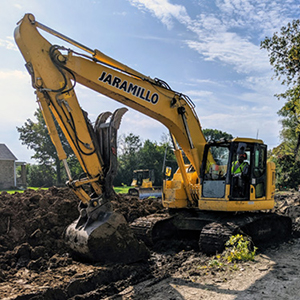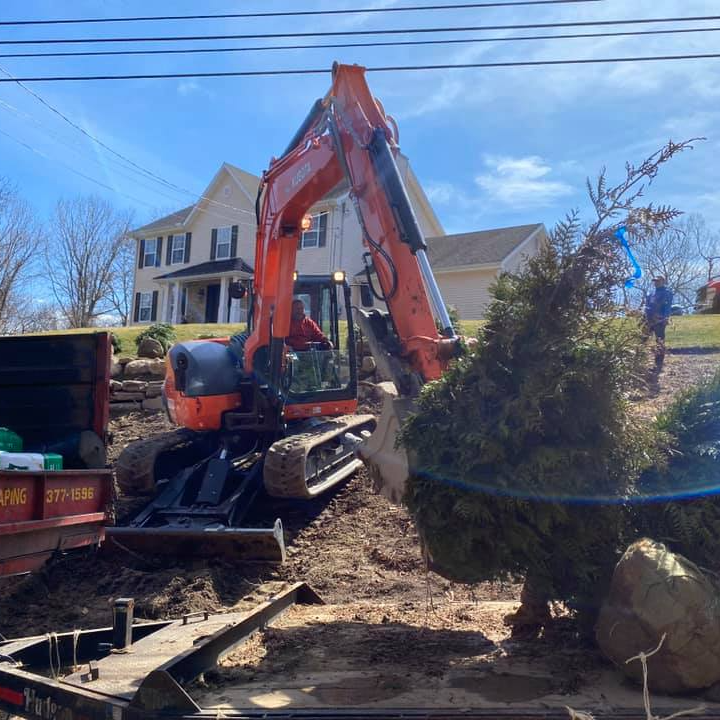Excavating Ohio - Top Excavation Specialists for Ohio Projects
Excavating Ohio - Top Excavation Specialists for Ohio Projects
Blog Article
Unveiling the Art of Excavation: Pro Tips for Safe and Productive Excavating
As dirt is turned and planet is moved, the intricacies of excavation expose themselves, demanding a keen understanding of tools, dirt composition, safety and security protocols, and ecological considerations. The knowledge required to navigate these aspects properly can imply the distinction in between a successful excavation job and a prospective calamity.
Importance of Appropriate Tools
To guarantee the security and efficiency of any type of excavation task, utilizing the suitable tools is vital. The right devices not only improve performance but also mitigate threats associated with digging. Excavation projects vary in range and intricacy, varying from small domestic landscape design work to large building and construction undertakings. Regardless of the job dimension, having the proper tools can make a significant difference in the result.
These flexible machines come in numerous sizes to suit various job requirements. Miniature excavators are excellent for smaller sized tasks, while bigger excavators deal with more considerable projects effectively.
Aside from excavators, other important tools consists of dump bulldozers, vehicles, and trenchers. Discard trucks are necessary for eliminating and transporting excavated products, while plates are utilized for excavating narrow and deep trenches. Bulldozers master jobs that need pressing large quantities of soil or debris. By purchasing the suitable devices, excavation jobs can be finished securely, promptly, and with accuracy.
Understanding Dirt Make-up
A comprehensive understanding of dirt make-up is essential for carrying out excavation projects with accuracy and security. Recognizing the different kinds of soil is critical as it directly affects excavation approaches, equipment option, and general project performance. Dirt composition normally includes four major parts: sand, silt, clay, and raw material. Each element has distinct properties that affect exactly how dirt responds to excavation procedures.
Silt bits are smaller than sand but bigger than clay, using moderate drainage and communication. Organic matter, such as decaying plant product, impacts soil fertility and security.
Before starting excavation, performing soil examinations to identify its composition and characteristics is crucial. This details aids in choosing the appropriate tools, executing safety actions, and establishing excavation strategies customized to the specific dirt conditions - dump truck companies in ohio. By understanding dirt composition, excavation specialists can enhance job outcomes while making sure safety and adherence to finest practices
Precaution and Procedures
Comprehending soil structure is the cornerstone upon which safety and security actions and protocols for excavation projects are built, making certain the well-being of employees and the success of the undertaking. There are numerous key steps that need to be applied to mitigate dangers and stop crashes. when it comes to safety and security during excavation.
Primarily, before any kind of excavating starts, a comprehensive assessment of the website need to be conducted to identify any prospective dangers such as below ground energies, unpredictable dirt problems, or nearby structures that might posture Learn More a threat. It is crucial to have a proficient individual manage the excavation process to make certain important site that all safety and security procedures are adhered to strictly.
Furthermore, all workers entailed in the excavation has to be appropriately educated in safe digging techniques and the correct procedure of devices. By adhering to these safety measures and methods, excavation jobs can be completed efficiently and without incident.
Reliable Excavation Preparation
When getting started on an excavation job, precise planning is important to make certain performance, security, and successful end results. Effective excavation preparation entails several essential actions that are crucial for the smooth execution of the job. The initial step is to carry out a thorough site analysis to identify any kind of prospective hazards, such as below ground utilities or unpredictable dirt problems. This info is important for creating a comprehensive excavation strategy that includes security procedures and risk mitigation techniques.
When the website evaluation is full, the following action is to develop a clear timeline and timetable for the excavation tasks. This consists of establishing the series of jobs, equipment demands, and manpower allowance. Correct organizing aids prevent delays and makes sure that the task remains on track.

Moreover, communication among all employee is paramount during the planning phase. Clear directives, regular updates, and efficient control are this hyperlink vital for a successful excavation job. By investing effort and time in precise planning, excavation teams can considerably improve efficiency, reduce risks, and accomplish successful end results.

Taking Care Of Environmental Factors To Consider
With boosting emphasis on ecological sustainability in building practices, taking care of environmental considerations has become a crucial aspect of excavation tasks. Excavation activities have the potential to affect the surrounding setting via soil disintegration, sediment overflow, environment disturbance, and contamination of water sources. To minimize these risks, it is crucial to carry out best methods that prioritize ecological protection.

Additionally, proper waste administration is vital to avoid soil and water contamination. Executing treatments for the disposal of unsafe materials, recycling of waste products, and lessening using damaging chemicals can substantially minimize the environmental influence of excavation projects. By incorporating these techniques right into excavation planning and execution, building firms can make certain that their tasks are not only safe and productive however also ecologically accountable.
Conclusion
To conclude, understanding the art of excavation needs an extensive understanding of appropriate equipment, dirt structure, security measures, and effective preparation. By adhering to these standards and thinking about environmental elements, excavations can be performed safely and successfully. It is essential to prioritize safety and efficiency in every excavating task to ensure effective outcomes.
As soil is turned and planet is moved, the complexities of excavation expose themselves, requiring a keen understanding of devices, soil make-up, security procedures, and ecological factors to consider.To make sure the safety and security and efficiency of any excavation job, making use of the ideal equipment is critical.A comprehensive grasp of dirt make-up is basic for implementing excavation tasks with accuracy and safety. Comprehending the various kinds of dirt is crucial as it directly influences excavation approaches, tools selection, and total job performance. By recognizing dirt make-up, excavation professionals can improve project outcomes while making sure safety and security and adherence to finest methods.
Report this page